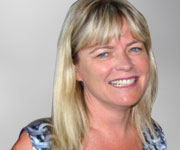ENSURING a safe operation for every patient is not straightforward. Surgical patients range from the gravely ill with a slim chance of survival to the perfectly healthy who are seeking enhancement.
Given this highly variable mix, surgical safety can be problematic to define, difficult to implement and harder to measure.
As the population ages and technological advances feed public expectations, surgeons may feel at risk of finding themselves in the situation described over a century ago by then professor of surgery at the University of Edinburgh, John Chiene: “The operation was a complete success, but the patient died of something else”.
As several commentators in the latest issue of the MJA indicate, there has recently been renewed focus on this enduring surgical dilemma.
In an overview of the expanding field of perioperative care, Professor Bruce Waxman describes the ideal scenario, in which elective patients benefit from multidisciplinary preoperative assessment and an “enhanced recovery after surgery” pathway.
Preoperative planning and a “preflight” checklist in the operating theatre pay dividends for patients in their postoperative journey, even in emergency surgery.
With the aim of creating surgeons with a more holistic outlook, Australian standards of practice now include non-technical competencies including professionalism, communication, leadership and advocacy.
Associate Professor Michael Hollands, president of the Royal Australasian College of Surgeons (RACS), describes initiatives to ensure trainee surgeons are versed in these skills and efforts to up-skill practising surgeons.
He makes the important point that such efforts must be clinically relevant for them to have any impact.
The quality of surgical training is obviously relevant to patient safety. But could the training model itself, historically assumed to require full-time dedication, be an obstacle to acquiring the best possible surgeons? And how safe is fulltime training for trainees?
These questions arise from a survey of Australasian surgical trainees. Only two of the 659 trainees surveyed had secured part-time accredited training positions, although a third of respondents expressed an interest in this model.
The authors point out that this deficit in part-time training opportunities may result in applicants with family, personal or professional responsibilities and interests being filtered out of the training pool.
Furthermore, the average working hours of full-time Australasian surgical trainees are at a level associated with burnout.
In an accompanying commentary, Dr Simon Williams, censor-in-chief of the RACS, confirms at least one part-time accredited surgical training post in Australia has proven successful for both the hospital and the trainee.
The RACS has now established a working party to look at extending opportunities for part-time training.
When the medical director of the UK’s National Health Service recently announced plans to publish a league table of mortality and “other” outcomes for British surgeons, the official response of the Royal College of Surgeons and the British Medical Association included a mild warning that uncorrected reporting of mortality rates may lead to an unwillingness of surgeons to take on high-risk cases.
Informal commentators were more vocal, raising concerns about patient selection, impact on training, blame of individual surgeons for factors beyond their control, skewed statistics and the logistics of measuring performance.
According to Professor Guy Maddern, public reporting is not yet planned for Australia, but the situation in the UK underscores the challenge for our own developing surgical audit systems of how best to determine, measure and feed back meaningful performance indicators to surgeons and their patients.
Waxman, Hollands and Maddern all present a common observation: it is patients who are driving the need for information, quality and assurances of safety.
Undergoing surgery is certainly safer now than when Chiene made his ironic observation. But it remains true that, particularly from the patient’s perspective, there is no such thing as a successful operation with a poor outcome.
Dr Ruth Armstrong is senior deputy editor of the MJA.
This article is reproduced from the MJA with permission.

 more_vert
more_vert
Interestingly in the aviation business, the risks of flight are never discussed with prospective passengers and clearly a plane crashing is a significant event that could concern me in a Rogers and Whittaker kind of way. In the legal business, particularly in civil work, the lawyers are hardly ever called to account when there is a bad outcome. It was always the plaintiff’s “choice” to proceed. Patients too have choices.
The emphasis on safety here seems to be focussed on the proceduralist.There should also be awareness that the patient has responsibilities too.Certainly, whilst the best advice including alterantives is ideally offered by the surgeon in a balanced way.Ultimately, the patient not the surgeon makes the decision to (or not) undergo the procedure.Patients need to really listen to the advice that is given and then decide if that is what they really want (or need).